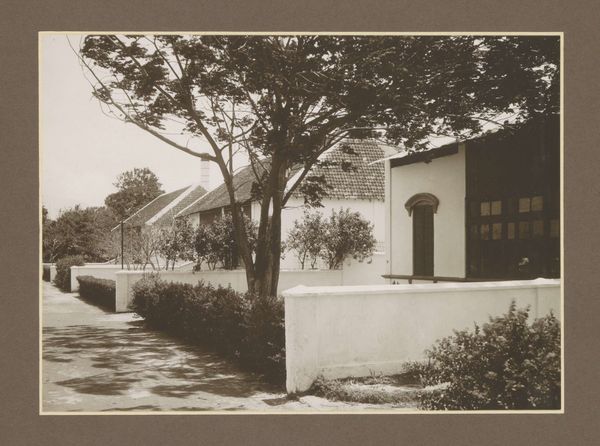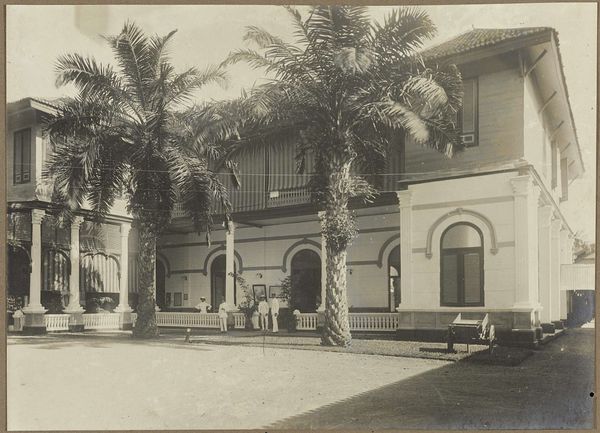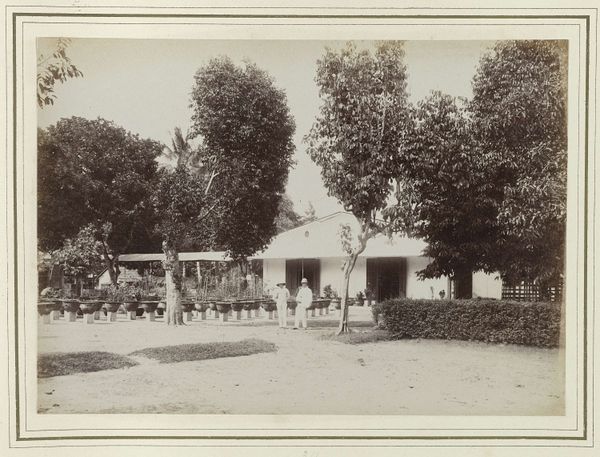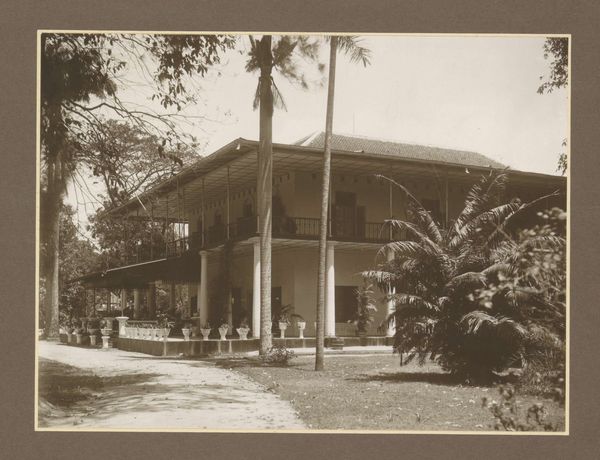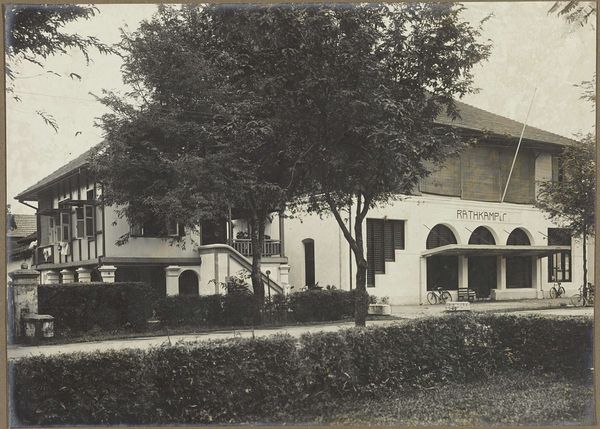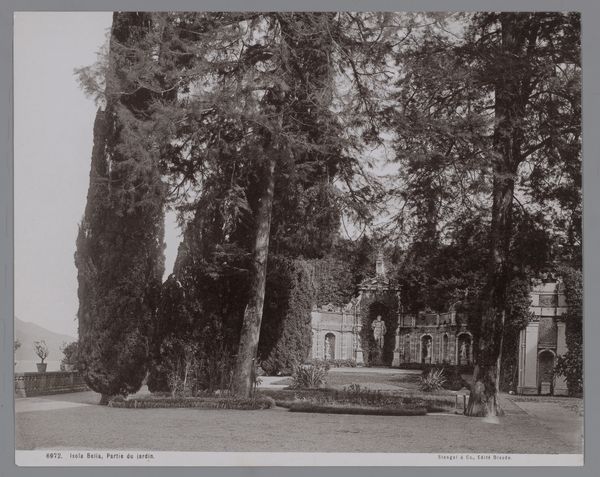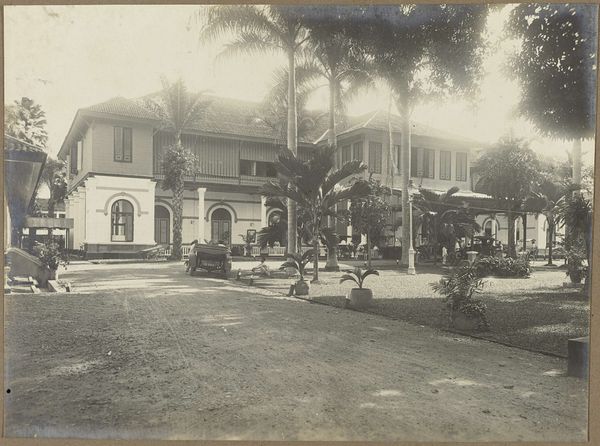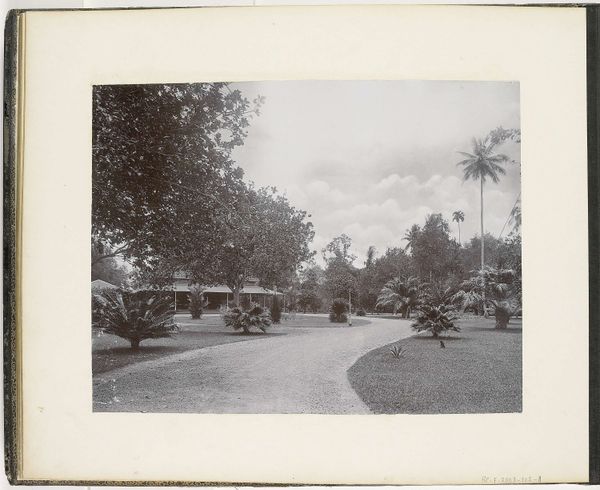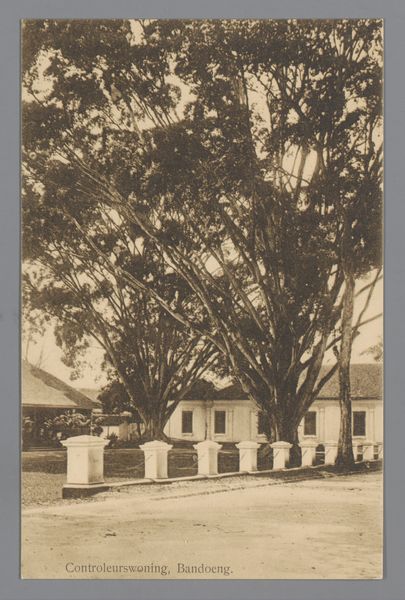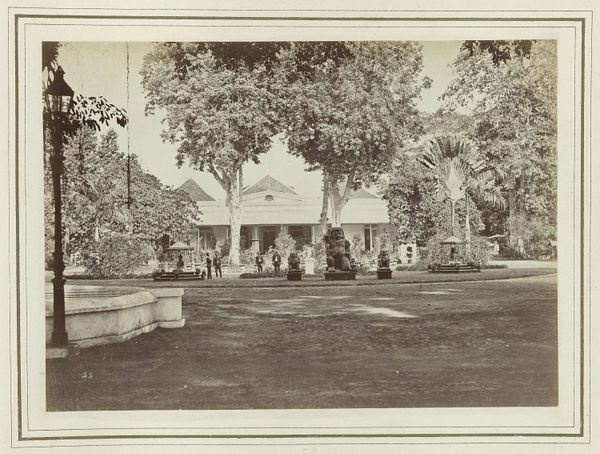
print, photography
# print
#
landscape
#
photography
#
road
#
plant
#
orientalism
#
realism
Dimensions: height 297 mm, width 450 mm
Copyright: Rijks Museum: Open Domain
Editor: This photograph, taken sometime between 1925 and 1930, is titled "Laan met woningen voor werknemers van suikerfabriek Ngandjoek op Java," which translates to "Lane with houses for workers of the Ngandjoek sugar factory in Java." I'm really struck by the almost staged stillness of the image; it feels like a very deliberate documentation. What can you tell me about it? Curator: It’s a fascinating image, particularly when considered within a socio-political context. These seemingly idyllic scenes of worker housing are deeply embedded in the history of Dutch colonialism and the sugar industry in Java. How might this image have served a particular purpose at the time, and for whom? Editor: I guess it might have been used to promote a positive image of colonial life? To suggest a well-ordered and perhaps even benevolent system? Curator: Exactly. Images like these circulated widely, reinforcing the idea of colonial enterprises benefiting local populations, whilst often obscuring the realities of forced labor and economic exploitation. The ordered layout of the housing and the seemingly lush vegetation could be read as visual propaganda. Editor: So, the photo normalizes a power dynamic, turning what was essentially economic control into a peaceful neighborhood scene. Did the photographer perhaps intentionally omit elements that would reveal this darker side? Curator: Likely. What we don’t see in the photograph is just as important as what we do see. What are the sounds, the work conditions, and lived experiences absent from this "objective" view? It’s vital to remember that photography itself was a tool within the colonial project. Editor: I see. I hadn’t considered how much the visual composition contributes to shaping the viewer's understanding of the situation, potentially masking inequalities. Thank you! Curator: Precisely! Examining art through a historical lens allows us to uncover the narratives and power structures embedded within the seemingly ordinary.
Comments
No comments
Be the first to comment and join the conversation on the ultimate creative platform.
